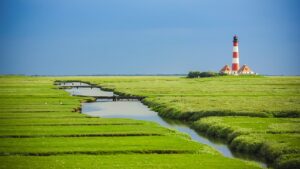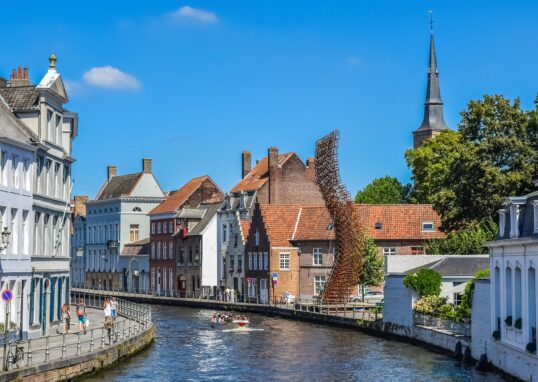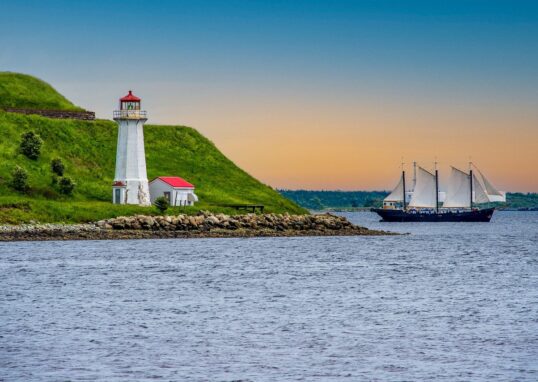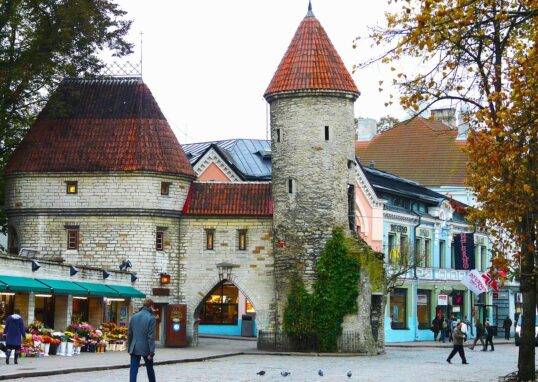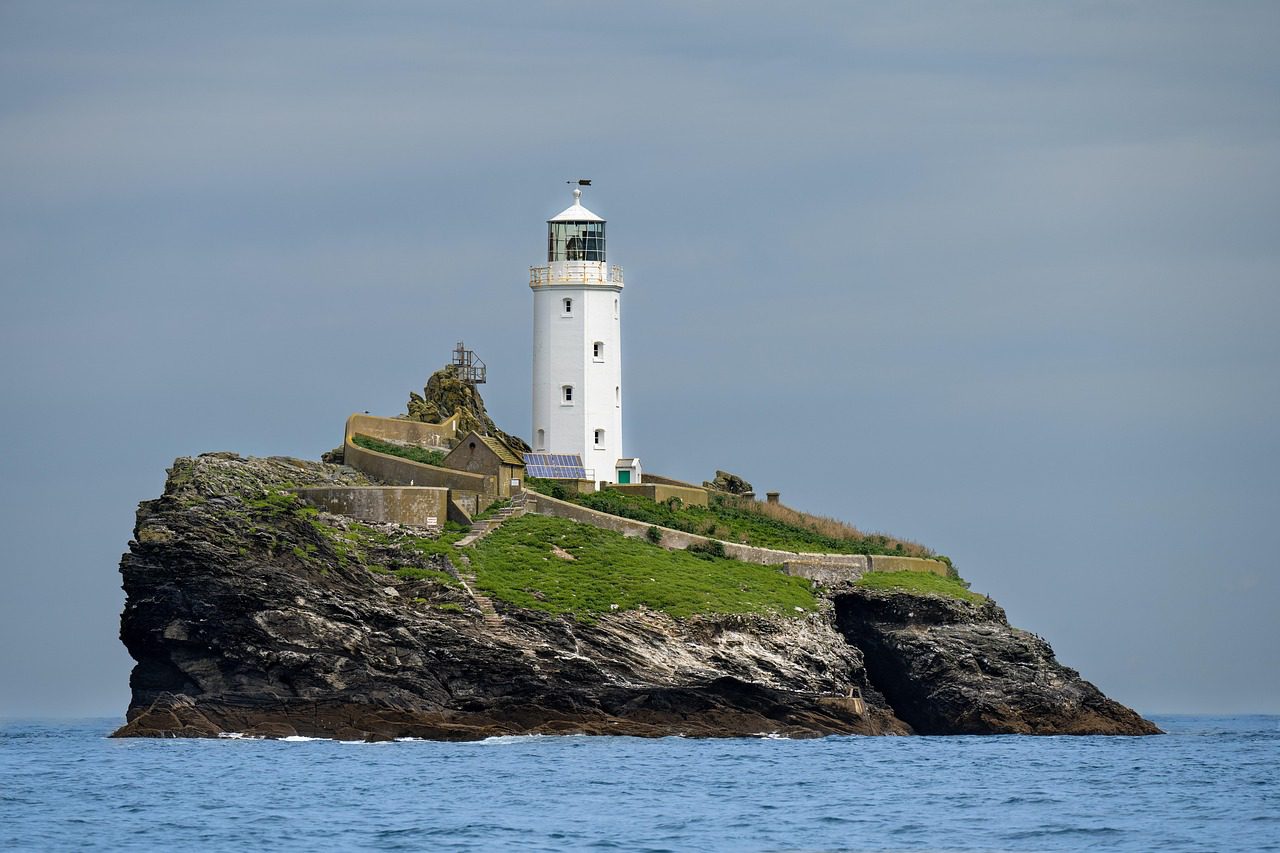
The Lighthouse: A Guiding Light Through History
Some incredible and emblematic buildings in the world are lighthouses. They stand on rocky shores, cliffs, or islands, emitting powerful beams of light to guide ships away from dangerous seas. Towers have a rich and intriguing past of technology, safety, and human courage. In this article, we will talk about the history of lighthouses, how they work, their design, their variety, famous lighthouses across the world, and their breathtaking surroundings that make them wonderful places to visit.
The Origin and History of Lighthouses
Sailors years ago were much at risk of danger on seas. Without the navigation tools of today, they had no clue where rocks, islands, or shallow waters existed. Many ships sank in storms or by darkness. They built the first lighthouses to guide them thousands of years ago. The Pharos of Alexandria was the earliest known lighthouse, built in Egypt around 280 BC. It was one of the Seven Wonders of the Old World. It stood at more than 100 meters tall and utilized fire on top to guide ships into the port of Alexandria, which was a busy port. Subsequently, the Romans built lighthouses across their empire, one in Dover in England and another in La Coruña in Spain. These towers were made of stone and had large fires or lamps of oil at night.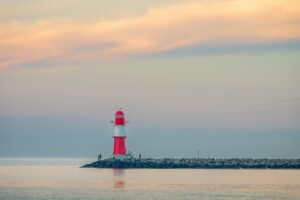
Structure and Design of Lighthouses
Lighthouses come in all shapes and sizes. But they all share the same purpose — to produce light that can be seen from a far distance. A typical lighthouse possesses some basic elements:
- The Foundation – usually built on solid rock or concrete so that it can resist waves and storms.
- The Tower – tall and narrow, often built from stone, brick, or metal. Its structure is such that it can resist wind and water pressure.
- The Lantern Room – at the top, where the light shines through.
- The Lens and Lamp – the center of the lighthouse; they produce and direct the light beam.
- The Gallery or Balcony – a spiral walkway around the lantern where the keeper may have windows washed or check the light.
- The Keeper’s Quarters – living rooms for the keeper and his or her family, sometimes built inside or alongside the tower. Lighthouses range from solitary towers on islands or reefs to being part of a harbor entrance or coastal cliff.
How a Lighthouse Works
The main job of a lighthouse is to cast a beam of light that can be seen by ships from various miles away. The light once was generated by burning oil, coal, or wood. Subsequently, kerosene lamps came into use. Today, most lighthouses are served by electric bulbs or LED light, which is much more powerful and reliable. The lens is crucial. The Fresnel lens uses a number of glass prisms to collect and converge light into a powerful, concentrated beam. Depending on the model, the beam can be sent out as far as 30 to 40 miles to sea. Lighthouses also exhibit unique light patterns called characteristics. A lighthouse can flash once in 5 seconds, for example, and another every other two flashes with a gap. These help mariners tell which lighthouse they see.
The Lighthouse Keeper’s Life
Before automation, every lighthouse needed a keeper. It was a difficult but rewarding work for the keeper. They had to tend the lamp at night, even in storms or bad weather. They cleaned the lens daily, lit oil lamps, and coiled up the clockwork mechanism that rotated the light. When it was rainy weather, they could keep vigilant through the entire night to ensure everything was in working order. Keepers typically lived with their families in a modest cottage near the lighthouse.
Types of Lighthouses
There are different types of lighthouses depending on the site where they are built. The main ones are as follows:
- Coastal Lighthouses – built along the seashore to warn against menacing cliffs or guide ships to harbor.
- Harbor Lighthouses – found at harbor entrances to aid ships in safe entrance.
- Offshore Lighthouses – built on reefs or rocks off the coast, typically surrounded by waves.
- Skeletal or Metal Lighthouses – light, airy towers which are typical in tropical regions or sandy beaches.
- Floating Lighthouses (Lightships) – big lamped ships utilized where there is too much depth or danger to build a tower.
- They are all unique, but they all serve the same purpose — to guide and safeguard.

Famous Lighthouses Around the World
Lighthouses are not only lights of safety and guidance but also breathtaking landmarks with history and personality. They stand in some of the most beautiful places on earth — along seaside cliffs and islands, tranquil harbors and sandy beaches. Each lighthouse has a story to share, an architecture, and a special habitat of its own. In this chapter, we will see some of the world’s most well-known lighthouses, their past, architecture, and the scenery.
Pharos of Alexandria, Egypt – The First Great Lighthouse
The Pharos of Alexandria is considered to be the world’s first authentic lighthouse and one of the Seven Wonders of the Ancient World. It was built around 280 BC on the small island of Pharos, near the harbor of Alexandria, Egypt. It was ordered by Ptolemy II Philadelphus and was designed by the Greek architect Sostratus of Cnidus. The monument was enormous, between 100 and 130 meters tall, one of the highest man-made structures of the ancient world. It had three sections: a square-shaped base, an octagon-shaped middle section, and a top in the shape of a cylinder where a huge fire was lit at night. The flame was reflected with mirrors made of polished metal, which helped sailors navigate to Alexandria harbor.
Tower of Hercules, Spain – The Oldest Working Lighthouse
Located in A Coruña, Spain, is the world’s oldest still-functioning lighthouse, the Tower of Hercules. Built by the Romans in the 1st century AD, it still serves as a navigational aid today. The tower stands 55 meters tall and has been restored to magnificent beauty. Its Roman core has remained intact under later alterations. It was declared a World Heritage Site by UNESCO in 2009 for its history and cultural value. The lighthouse stands atop a green hill overlooking the Atlantic Ocean, dotted with walking paths, sculptures, and parks. The skyline can be enjoyed from the top with panoramic views of the ocean as well as A Coruña city. The sculpture park adjacent to the lighthouse is based on legends and myths of Hercules and so the location is informative as well as scenic.
Eddystone Lighthouse, England – Engineering Against the Sea
he Eddystone Lighthouse stands on a dangerous reef approximately 14 kilometers southwest of Plymouth, England. It is among the most famous lighthouses in navigation history because of its unbelievable engineering feats. The first lighthouse was built in 1698 by Henry Winstanley, but it was destroyed by a storm after five years. There were different new models after that, each of them being stronger and more advanced. The current structure, built by James Douglass in 1882, stands at a height of 49 meters and is made of granite. It is the courage of its builders and maintenance staff, who often had to face turbulent waves and forceful winds, which distinguishes this lighthouse. It served as a model for the next lighthouse construction.
Cape Hatteras Lighthouse, USA – The Tallest in America
Cape Hatteras Lighthouse is a very recognizable one of the world’s. It watches over Hatteras Island, North Carolina, protecting a portion of the Atlantic Ocean that has come to be known as the “Graveyard of the Atlantic”, where hundreds of vessels have come to rest due to moving sandbars and powerful currents. Built in 1870, the lighthouse stands 63 meters (208 feet) tall, the highest brick lighthouse in the nation. Its black and white spiral stripes can be seen from the distance. The entire building was moved 880 meters inland in 1999 to protect it from beach erosion — a phenomenal feat of engineering.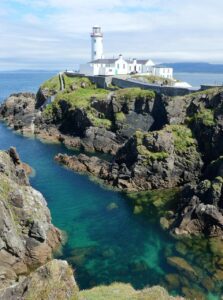
Peggy’s Point Lighthouse, Canada – The Heart of Nova Scotia
One of the world’s most photographed lighthouses, Peggy’s Point Lighthouse, also named Peggy’s Cove Lighthouse, is located in Nova Scotia, Canada. Built in 1915, it stands 15 meters high above smooth granite rocks overlooking the Atlantic Ocean. The red lantern and white tower of the lighthouse stand out strongly against the black blue water and gray rocks. It is still a navigation beacon, albeit now fully automated.
Lindesnes Lighthouse, Norway – The Southernmost Beacon
The Lindesnes Lighthouse is Norway’s most southerly extremity and the country’s oldest lighthouse station. The first light was ordered in 1655, and the current stone tower was completed in 1915. The tower stands 16 meters tall on a rocky hill surrounded by steep cliffs and the North Sea. It now contains a museum and visitor center outlining 350 years of Norwegian maritime history.
Cape Byron Lighthouse, Australia – Light of the Pacific
Standing proudly at the eastern tip of continental Australia, New South Wales’s Cape Byron Lighthouse is the nation’s most iconic landmark. Built in 1901, it remains operational. A 22-meter white lighthouse, it sits atop a rocky headland above the Pacific Ocean. Dolphins and whales can often be seen by tourists from the top during their migration months. The nearby Cape Byron State Conservation Area offers walking trails, beaches, and rainforest walks. Byron Bay town close by is famous for its relaxed life style, surf beaches, and arts community.
Kīlauea Lighthouse, Hawaii – A Paradise View
Located on the north shore of Kauai, the Kīlauea Point Lighthouse is one of Hawaii’s most scenic spots. It was built in 1913 and sits 52 meters above the Pacific Ocean on a narrow peninsula. The white cylindrical tower is surrounded by lush green cliffs and turquoise waters. The area around the lighthouse, the Kīlauea Point National Wildlife Refuge, is home to seabirds such as albatrosses, frigatebirds, and red-footed boobies.
Fanad Head Lighthouse, Ireland – Beauty on the Wild Atlantic Way
The Fanad Head Lighthouse in Donegal County, Ireland, is Europe’s most beautiful and most romantic lighthouse. It stands on a narrow point of land between Mulroy Bay and Lough Swilly, with views across the wild Atlantic coast. The lighthouse was built in 1817 after a fatal shipwreck off the shore. The white tower rises 22 meters above ground and is circled with cliffs, waves, and miles of sea views.
Cape Point Lighthouse, South Africa – At the Edge of Two Oceans
The Cape Point Lighthouse is located in the Cape of Good Hope Nature Reserve, near Cape Town, South Africa. It is perched on breathtaking cliffs where the Indian and Atlantic Oceans meet. The first lighthouse was built in 1859 on the summit, but because it was typically fog-shrouded, a second was built lower down in 1919. Nowadays, the site is located within Table Mountain National Park, which is one of the most stunning sights on the planet.
Portland Head Light, USA – The Oldest in Maine
The Portland Head Light in Cape Elizabeth, Maine, is the oldest in the state. It was first lit in 1791 and commissioned by President George Washington. The tower itself stands at 24 meters tall and sits on rocky cliffs along the Atlantic coast. Within a short walking distance is the Fort Williams Park that features scenic walks, picnic areas, and historic ruins. The lighthouse also has a museum that features nautical collectibles and histories of shipwrecks.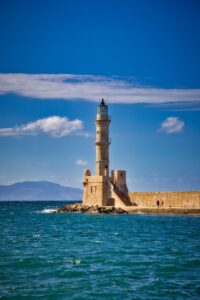
Importance of Lighthouses
Lighthouses have been crucial to maritime safety for centuries. They have:
- Saved numerous lives by warning ships about dangers. Guided trade routes and facilitated economic growth. Served as guides for sailors and fishermen.
- Inspirational art and literature — many poems, paintings, and novels feature lighthouses as a symbol of hope and light.
- Although modern GPS is used to replace many lighthouses, they are important psychically and historically. Many still function and serve as backup systems when technology fails us.
Lighthouses as Tourist Attractions
Today, many old lighthouses have become tourist attractions. People visit them for their history, architecture, and stunning seascape. Tourists can climb the spiral staircase to the summit, explore museums, or stay overnight in old keeper’s cottages. Others are even boutique hotels or cafes.
Surrounding Places and Environments
Lighthouses are often surrounded by beautiful landscapes and natural wonders. Let’s explore the types of surroundings you’ll find around them:
- Coastal Cliffs Many lighthouses stand on high cliffs overlooking the ocean, such as Ireland’s Cliffs of Moher or Cornwall’s rugged coastline in England. These areas are popular for hiking, bird watching, and photography.
- Small Islands The other lighthouses are built on tiny islands like Fastnet Rock in Ireland or Isle of May in Scotland. The surroundings are cut off, with plenty of sea birds, seals, and marine creatures.
- Harbors and Ports Lighthouse harbors, such as those of Genoa or Boston, are filled with fishing boats, seafood restaurants, and markets. These are lively and teeming with local culture.
- Sandy Beaches In tropical countries like the Bahamas, Philippines, or Thailand, beaches are lined with lighthouses. Visitors can swim, snorkel, or go on boat tours while visiting the site.
- Forest and Hills Other land lighthouses, like those along the Great Lakes in North America, have pine forests or sand dunes surrounding them. The spots are peaceful and perfect for picnics or nature walks.
- National Parks Some lighthouses are located inside protected national parks, such as the Acadia National Park in the state of Maine, USA. The parks offer scenic paths, wildlife, and heritage tours to travelers.

Modern Lighthouses and Technology
Technology has revolutionized the operations of modern lighthouses. The systems today use solar power, LED bulbs, and remote sensors. Most of them work automatically under nautical authorities. Despite all these developments, new lighthouses are still being built in certain coastal areas where currents are strong, reefs, or fog make navigation difficult. The new towers are usually made of steel or concrete and are meant to withstand hurricanes or earthquakes.
Preservation and Future
Today, historic lighthouses are also being conserved by several organizations. Organizations like the International Association of Marine Aids to Navigation and local heritage societies restore them and preserve them. Historians and volunteers typically help by maintaining the sites, coordinating tours, and educating visitors about their history. The future of lighthouses will certainly be a blend of history and technology — preserving their character while adapting to new maritime systems.
Conclusion
Lighthouses are more than just light beacons. They are symbols of guidance, resilience, and heritage. From the ancient Alexandria Pharos to solar-powered towers of the present day, they stir the hearts of people everywhere. Their locations — cliffs, beaches, islands, and harbors — connect the natural and cultural worlds to their allure. To be in a lighthouse is to step into a story of bravery and hope. Even though GPS is utilized in modern ships nowadays, the sight of a lighthouse piercing the dark sea still gets through to the heart. It reminds us that no matter how chaotic life becomes, there is always a light that will guide us back home.


